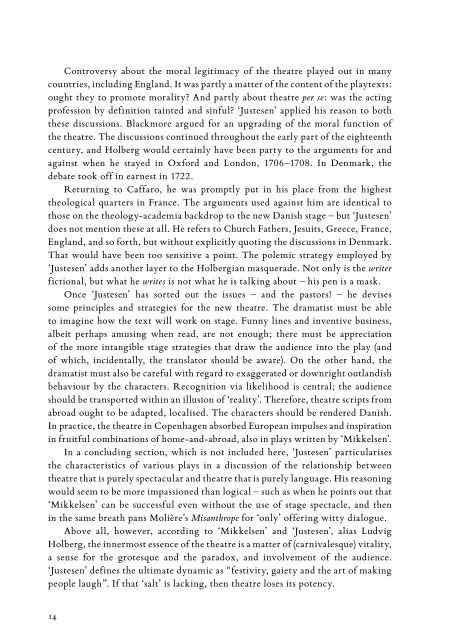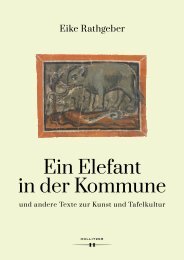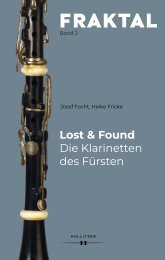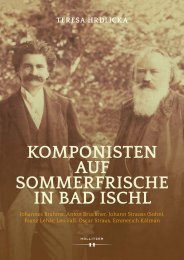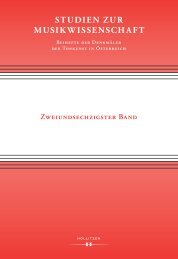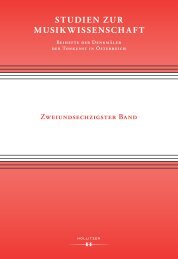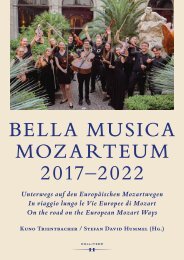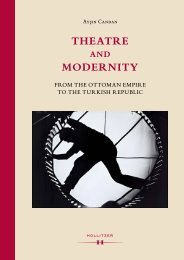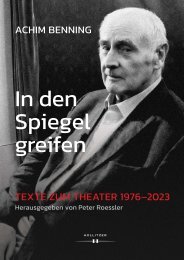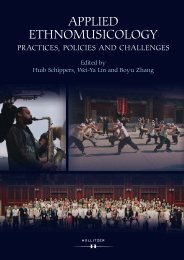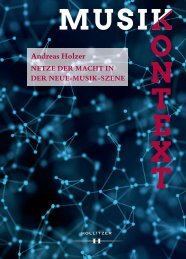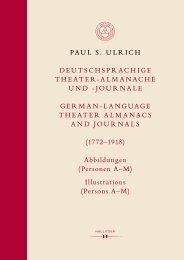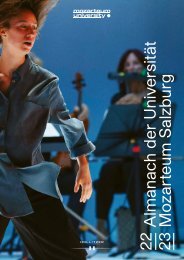Leseprobe_Holm_Holberg Plays Volume I
Create successful ePaper yourself
Turn your PDF publications into a flip-book with our unique Google optimized e-Paper software.
Controversy about the moral legitimacy of the theatre played out in many<br />
countries, including England. It was partly a matter of the content of the playtexts:<br />
ought they to promote morality? And partly about theatre per se: was the acting<br />
profession by definition tainted and sinful? ‘Justesen’ applied his reason to both<br />
these discussions. Blackmore argued for an upgrading of the moral function of<br />
the theatre. The discussions continued throughout the early part of the eighteenth<br />
century, and <strong>Holberg</strong> would certainly have been party to the arguments for and<br />
against when he stayed in Oxford and London, 1706–1708. In Denmark, the<br />
debate took off in earnest in 1722.<br />
Returning to Caffaro, he was promptly put in his place from the highest<br />
theological quarters in France. The arguments used against him are identical to<br />
those on the theology-academia backdrop to the new Danish stage – but ‘Justesen’<br />
does not mention these at all. He refers to Church Fathers, Jesuits, Greece, France,<br />
England, and so forth, but without explicitly quoting the discussions in Denmark.<br />
That would have been too sensitive a point. The polemic strategy employed by<br />
‘Justesen’ adds another layer to the <strong>Holberg</strong>ian masquerade. Not only is the writer<br />
fictional, but what he writes is not what he is talking about – his pen is a mask.<br />
Once ‘Justesen’ has sorted out the issues – and the pastors! – he devises<br />
some principles and strategies for the new theatre. The dramatist must be able<br />
to imagine how the text will work on stage. Funny lines and inventive business,<br />
albeit perhaps amusing when read, are not enough; there must be appreciation<br />
of the more intangible stage strategies that draw the audience into the play (and<br />
of which, incidentally, the translator should be aware). On the other hand, the<br />
dramatist must also be careful with regard to exaggerated or downright outlandish<br />
behaviour by the characters. Recognition via likelihood is central; the audience<br />
should be transported within an illusion of ‘reality’. Therefore, theatre scripts from<br />
abroad ought to be adapted, localised. The characters should be rendered Danish.<br />
In practice, the theatre in Copenhagen absorbed European impulses and inspiration<br />
in fruitful combinations of home-and-abroad, also in plays written by ‘Mikkelsen’.<br />
In a concluding section, which is not included here, ‘Justesen’ particularises<br />
the characteristics of various plays in a discussion of the relationship between<br />
theatre that is purely spectacular and theatre that is purely language. His reasoning<br />
would seem to be more impassioned than logical – such as when he points out that<br />
‘Mikkelsen’ can be successful even without the use of stage spectacle, and then<br />
in the same breath pans Molière’s Misanthrope for ‘only’ offering witty dialogue.<br />
Above all, however, according to ‘Mikkelsen’ and ‘Justesen’, alias Ludvig<br />
<strong>Holberg</strong>, the innermost essence of the theatre is a matter of (carnivalesque) vitality,<br />
a sense for the grotesque and the paradox, and involvement of the audience.<br />
‘Justesen’ defines the ultimate dynamic as “festivity, gaiety and the art of making<br />
people laugh”. If that ‘salt’ is lacking, then theatre loses its potency.<br />
14


